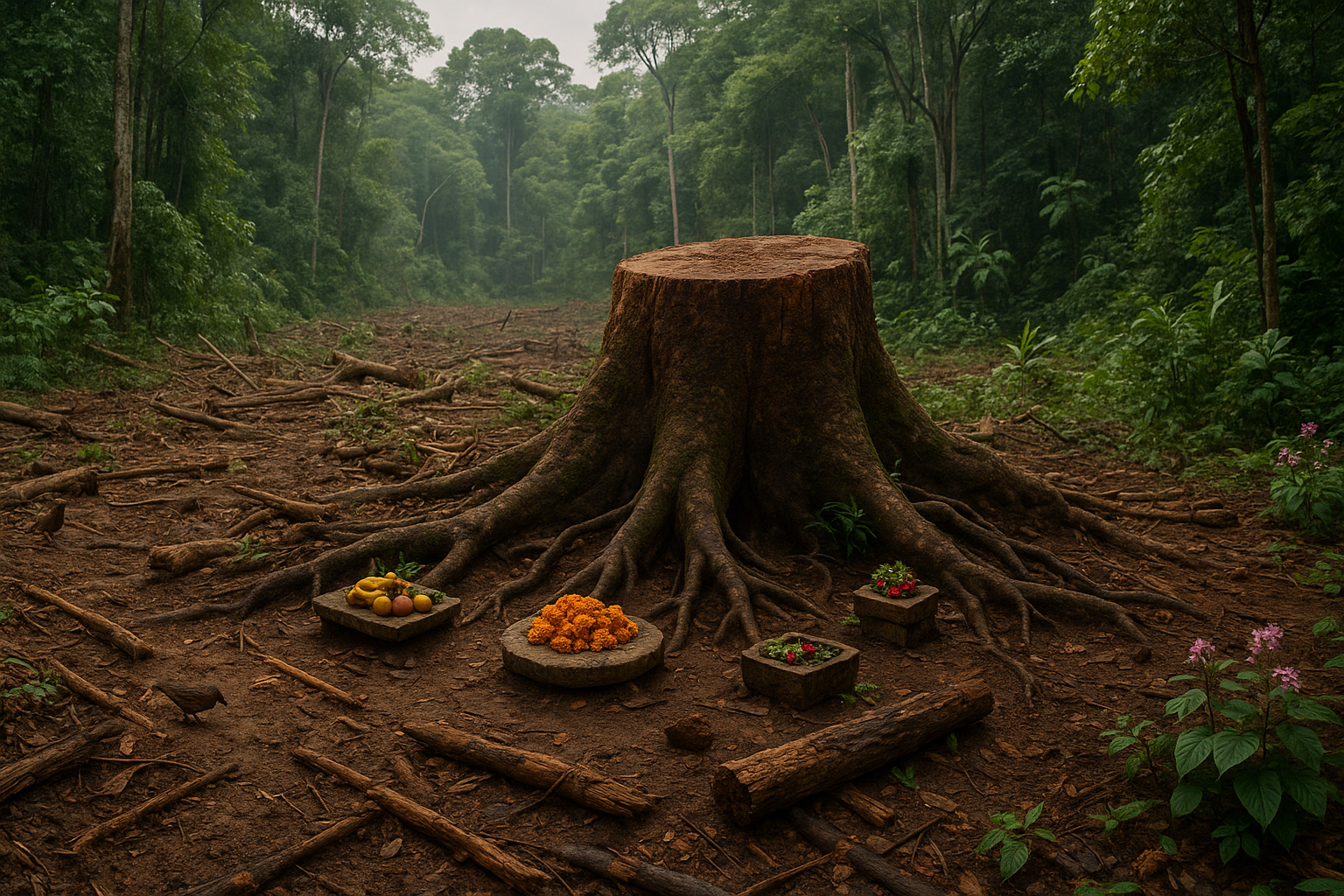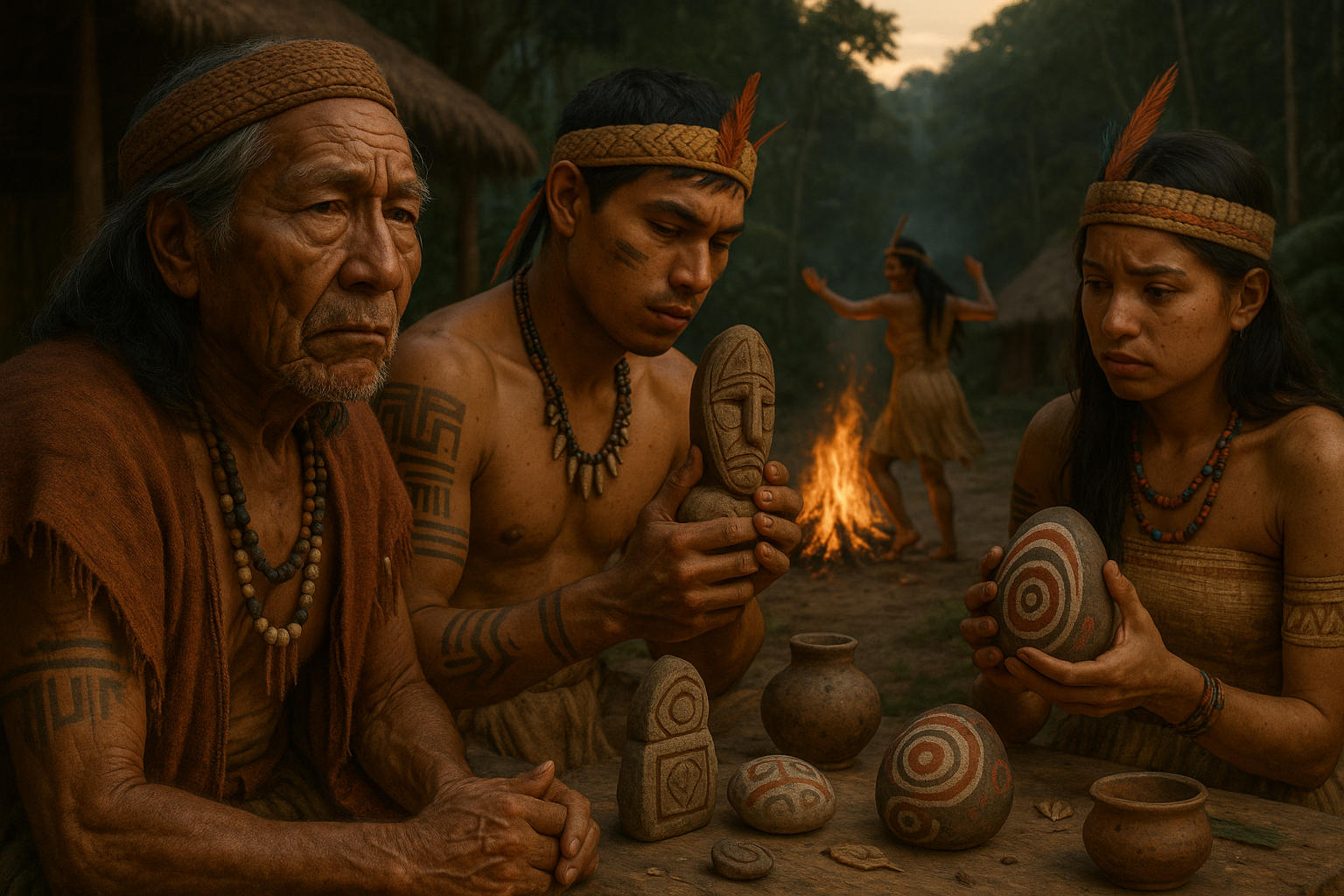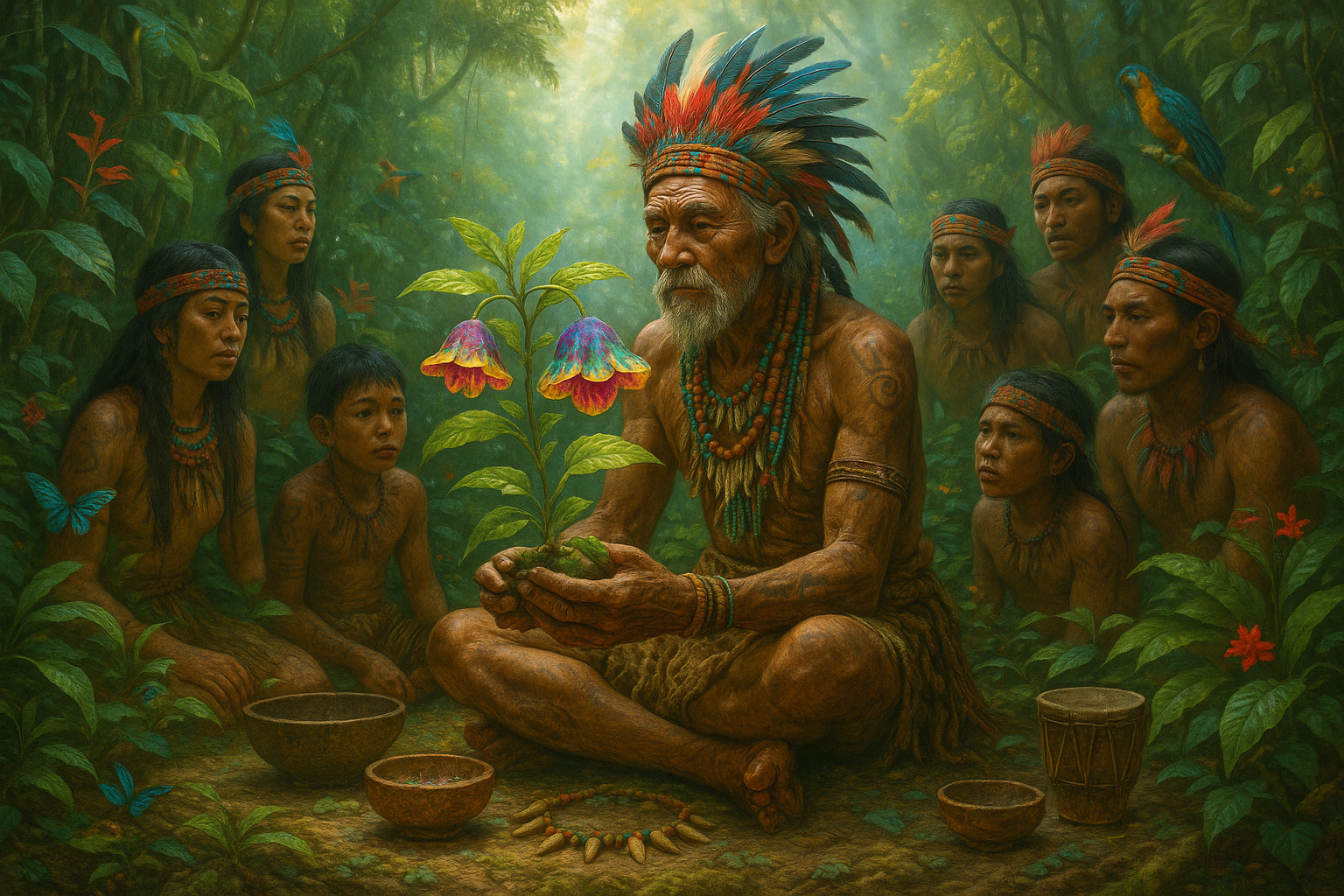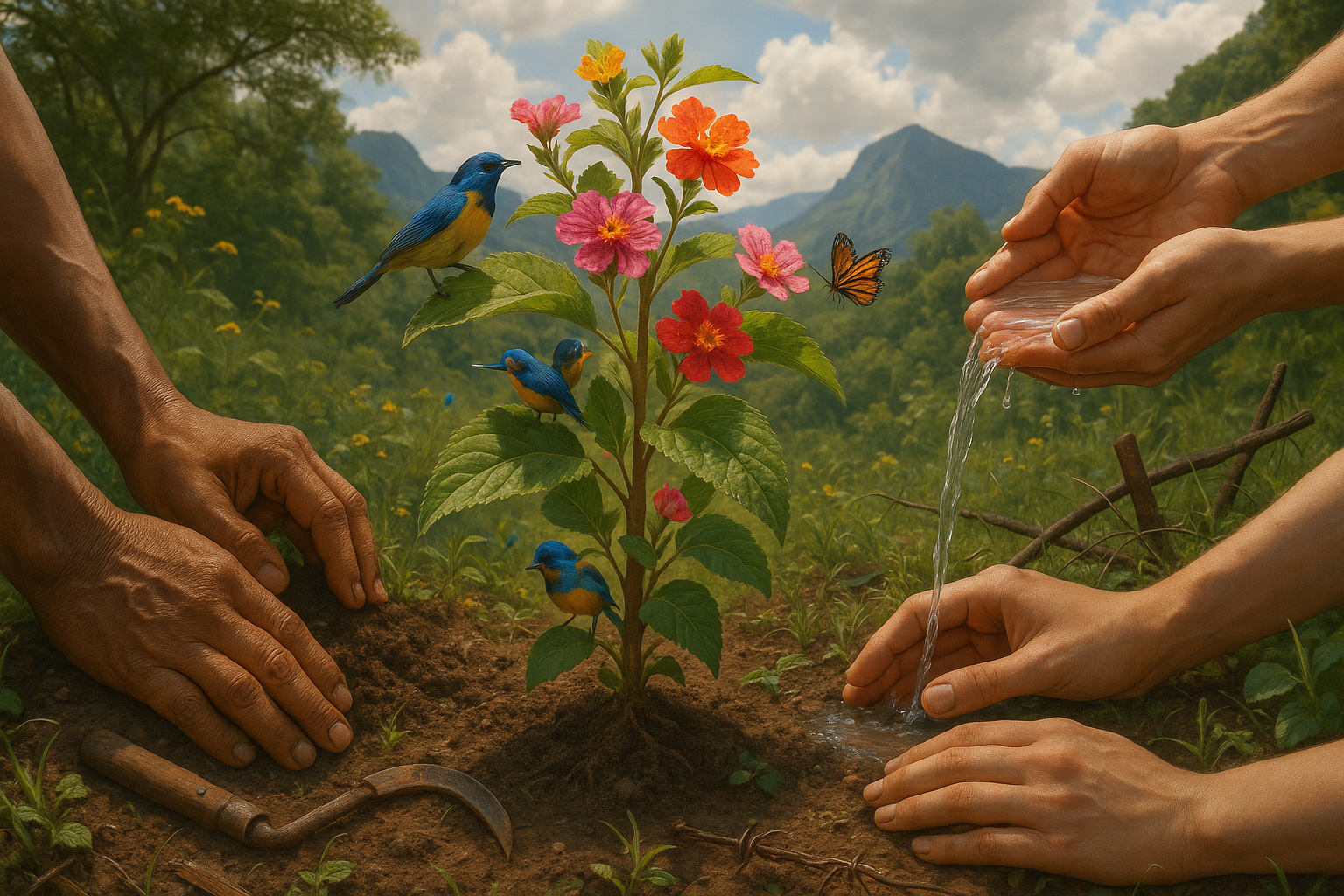In the heart of many cultures around the world, trees are not just seen as part of the landscape; they are deeply woven into the spiritual and cultural fabric of communities. 🌳 However, as modernity advances, the relentless march of deforestation is severing these sacred connections, leaving a profound impact on cultural heritage. This article delves into the intricate relationship between ritual trees and the traditions they nurture, exploring how their loss is more than just an environmental concern—it’s a cultural crisis.
Deforestation is often discussed in terms of its environmental consequences, such as loss of biodiversity and climate change. Yet, the cultural dimension of this devastation is frequently overlooked. Across continents, ritual trees stand as living monuments, bearing witness to generations of history and serving as symbols of identity and continuity. They are the silent keepers of stories, myths, and rituals passed down through the ages. When these trees are cut down, the intangible heritage they represent risks disappearing as well.
In many Indigenous and local communities, certain trees hold sacred significance. They are the epicenters of spiritual ceremonies, traditional medicine, and social gatherings. For instance, the mighty baobab in Africa, often referred to as the “Tree of Life,” serves not only as a source of nourishment and shelter but also as a sacred site for rituals. Similarly, in India, the revered peepal tree is considered a link between heaven and earth, a bridge between the physical and spiritual worlds. The felling of these trees is not merely a physical loss; it disrupts the cultural and spiritual practices that are integral to community life.
In this article, we will explore the multifaceted impact of deforestation on cultural heritage, focusing on three main areas: the erosion of cultural identity, the disruption of traditional knowledge, and the loss of biodiversity’s role in cultural practices. Each section will shed light on how intertwined cultural practices are with the natural world and what is at stake when that world is compromised.
The Erosion of Cultural Identity
The connection between trees and cultural identity is profound. In many societies, specific trees are seen as ancestors or deities, representing the lifeblood of cultural narratives. As these trees vanish, so does the tangible connection to one’s heritage. This erosion of cultural identity can lead to a sense of displacement and loss within communities, as the symbols of their history and beliefs are removed. We’ll discuss how deforestation is not just erasing forests but also eradicating the cultural landscapes that give communities their unique identity.
The Disruption of Traditional Knowledge
Traditional knowledge, passed down through generations, is often rooted in the natural world. Ritual trees are repositories of this knowledge, holding secrets of medicinal uses, spiritual practices, and ecological insights. As these trees disappear, so too does the invaluable wisdom they embody. This section will examine the domino effect of deforestation on cultural knowledge systems, and how the loss of ritual trees is leading to the extinction of traditional wisdom that has sustained communities for centuries.
The Loss of Biodiversity’s Role in Cultural Practices
Biodiversity and cultural practices are inextricably linked. Many rituals and customs are centered around the unique flora and fauna of a region. As deforestation leads to habitat destruction, it not only threatens species but also the cultural practices that depend on them. We’ll explore how the loss of biodiversity is impacting cultural rituals, from traditional festivals that celebrate nature to the use of specific plants and animals in ceremonial contexts.
As we navigate the complexities of deforestation and its impact on cultural heritage, it’s crucial to understand that the loss of ritual trees represents a broader narrative of cultural disintegration. 🌍 This is not just an environmental issue but a call to preserve the cultural diversity that enriches our world. By the end of this article, we hope to inspire action and awareness, emphasizing the need for sustainable practices that honor both nature and culture.

Conclusion: Preserving Our Cultural and Natural Heritage 🌿
Throughout this article, we have explored the intricate relationship between deforestation and its impact on ritual trees and cultural heritage. This issue is multifaceted, affecting not just the environment but also the cultural and spiritual lives of communities around the world. As forests are depleted, we lose more than just trees; we lose the stories, traditions, and wisdom passed down through generations. 🌳
Recap of Key Points
First, we delved into the historical significance of ritual trees in various cultures. These trees are often seen as sacred, serving as sites for ceremonies and embodying the spiritual beliefs of a community. The importance of these trees is deeply rooted in the identities of those who cherish them.
Next, we examined the devastating impact of deforestation on these vital cultural assets. The loss of forests means the erosion of cultural landmarks that are irreplaceable. Deforestation not only leads to the disappearance of species and habitats but also strips communities of their cultural heritage.
Moreover, we highlighted the efforts being made worldwide to combat this issue. From local grassroots movements to international policies aimed at forest conservation, there is a growing recognition of the need to preserve both our natural and cultural resources.
The Importance of Taking Action 🌍
The significance of this topic cannot be overstated. As we face unprecedented environmental challenges, understanding the link between nature and culture becomes even more critical. Preserving ritual trees and the heritage they represent is not just about maintaining biodiversity; it is about honoring the rich tapestry of human history and the wisdom it imparts.
We all have a role to play in this endeavor. Whether it is through supporting conservation initiatives, advocating for sustainable practices, or simply educating ourselves and others, every action counts. By doing so, we contribute to a legacy that respects both the earth and the diverse cultures that inhabit it.
Join the Conversation!
We encourage you to reflect on the insights shared in this article and consider how they relate to your own life and community. What traditions and natural landmarks hold meaning for you? How can you contribute to their preservation? 💭
We would love to hear your thoughts! Please feel free to leave a comment below. Share your experiences, ideas, or questions. Let us build a community dedicated to learning and growing together.
If you found this article valuable, consider sharing it with friends and family. Together, we can raise awareness and inspire action towards a more sustainable and culturally enriched world.
Thank you for joining us on this journey. Let’s continue to nurture the roots of our past, so they may blossom into a brighter future. 🌱
This conclusion encapsulates the essence of the article, summarizes the key points, emphasizes the importance of the topic, and encourages reader engagement. Remember to replace the placeholder URLs with actual links to ensure they lead to active and relevant sources.
Toni santos is a cultural storyteller and botanical history researcher devoted to uncovering the hidden narratives of cryptobotany and lost plant lore. With a lens focused on forgotten flora, Gabriel explores how ancient communities discovered, used, and ritualized plants — seeing them not merely as resources, but as vessels of meaning, identity, and ancestral memory.
Fascinated by mythical plants, vanished species, and secret ethnobotanical knowledge, Gabriel’s journey weaves through herbal manuscripts, oral traditions, and forgotten botanical practices passed down in fragments. Each story he tells is a reflection on the power of plants to heal, connect, and preserve cultural wisdom across time.
Blending ethnobotany, folklore studies, and cultural storytelling, Gabriel researches the plants, uses, and rituals that once shaped societies — uncovering how lost plant lore reveals deep interconnections between belief, nature, and survival. His work honors the healers, shamans, and herbalists who safeguarded this knowledge beyond the reach of written history.
His work is a tribute to:
-
The sacred role of plants in ancestral rituals
-
The beauty of forgotten botanical knowledge and uses
-
The enduring link between nature, culture, and myth
Whether you are passionate about ancient herbal traditions, curious about plant folklore, or intrigued by the mysteries of cryptobotany, Gabriel invites you on a journey through green lore and living memory — one plant, one ritual, one story at a time.




